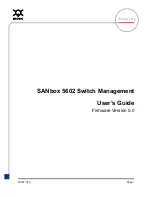
304
Step
Command
Remarks
2.
Enter BGP IPv6 unicast
address family view,
BGP-VPN IPv6 unicast
address family view, or BGP
IPv6 multicast address
family view.
•
Enter BGP IPv6 unicast
address family view:
a. bgp as-number
[
instance
instance-name
]
b. address-family ipv6
[
unicast
]
•
Enter BGP-VPN IPv6 unicast
address family view:
c. bgp as-number
[
instance
instance-name
]
d. ip vpn-instance
vpn-instance-name
e. address-family ipv6
[
unicast
]
•
Enter BGP IPv6 multicast
address family view:
f. bgp as-number
[
instance
instance-name
]
g. address-family ipv6
multicast
N/A
3.
Enable logging for BGP
route flapping.
log-route-flap
monitor-time
monitor-count
[
log-count-limit
|
route-policy
route-policy-name
] *
By default, logging for BGP route
flapping is disabled.
Configuring BFD for BGP
IMPORTANT:
If you have enabled GR, use BFD with caution because BFD might detect a failure before the
system performs GR, which will result in GR failure. If you have enabled both BFD and GR for BGP,
do not disable BFD during a GR process to avoid GR failure.
BGP maintains neighbor relationships based on the keepalive timer and hold timer in seconds. It
requires that the hold time must be at least three times the keepalive interval. This mechanism slows
down link failure detection. Once a failure occurs on a high-speed link, a large quantity of packets will
be dropped before routing convergence completes. BFD for BGP can solve this problem by fast
detecting link failures to reduce convergence time.
Before you enable BFD for a BGP peer or peer group, you must establish a BGP session between
the local router and the peer or peer group.
For more information about BFD, see
High Availability Configuration Guide
.
To enable BFD for a BGP peer (IPv4 unicast/multicast address family):
Step
Command
Remarks
1.
Enter system view.
system-view
N/A
Summary of Contents for HPE FlexNetwork 7500 series
Page 505: ...493 Connector N A ...
















































